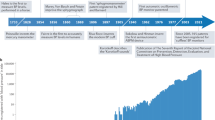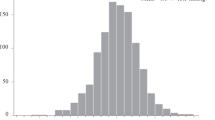Abstract
The present study compared the blood pressure variability (BPV) among office (OBP), home (HBP), and ambulatory blood pressure (ABP) measurements and assessed their determinants, as well as their agreement in identifying individuals with high BPV. Individuals attending a hypertension clinic had OBP measurements (2–3 visits) and underwent HBP monitoring (3–7 days, duplicate morning and evening measurements) and ABP monitoring (24 h, 20-min intervals). BPV was quantified using the standard deviation (SD), coefficient of variation (CV), and variability independent of the mean (VIM) using all BP readings obtained by each method. A total of 626 participants were analyzed (age 52.8 ± 12.0 years, 57.7% males, 33.1% treated). Systolic BPV was usually higher than diastolic BPV, and out-of-office BPV was higher than office BPV, with ambulatory BPV giving the highest values. BPV was higher in women than men, yet it was not different between untreated and treated individuals. Associations among BPV indices assessed using different measurement methods were weak (r 0.1–0.3) but were stronger between out-of-office BPV indices. The agreement between methods in detecting individuals with high BPV was low (30–40%) but was higher between out-of-office BPV indices. Older age was an independent determinant of increased OBP variability. Older age, female sex, smoking, and overweight/obesity were determinants of increased out-of-office BPV. These data suggest that BPV differs with different BP measurement methods, reflecting different pathophysiological phenomena, whereas the selection of the BPV index is less important. Office and out-of-office BP measurements appear to be complementary methods in assessing BPV.
This is a preview of subscription content, access via your institution
Access options
Subscribe to this journal
Receive 12 print issues and online access
$259.00 per year
only $21.58 per issue
Buy this article
- Purchase on Springer Link
- Instant access to full article PDF
Prices may be subject to local taxes which are calculated during checkout

Similar content being viewed by others
References
Kearney PM, Whelton M, Reynolds K, Muntner P, Whelton PK, He J. Global burden of hypertension: analysis of worldwide data. Lancet. 2005;365:217–23.
Williams B, Mancia G, Spiering W, Agabiti Rosei E, Azizi M, Burnier M, et al. 2018 ESC/ESH Guidelines for the management of arterial hypertension. Eur Heart J. 2018;39:3021–104.
Stergiou GS, Parati G. How to best assess blood pressure? The ongoing debate on the clinical value of blood pressure average and variability. Hypertension. 2011;57:1041–2.
Parati G, Ochoa JE, Salvi P, Lombardi C, Bilo G. Prognostic value of blood pressure variability and average blood pressure levels in patients with hypertension and diabetes. Diabetes Care. 2013;36:S312–324.
Nardin C, Rattazzi M, Pauletto P. Blood pressure variability and therapeutic implications in hypertension and cardiovascular diseases. High Blood Press Cardiovasc Prev. 2019;26:353–9.
Del Giorno R, Balestra L, Heiniger PS, Gabutti L. Blood pressure variability with different measurement methods: reliability and predictors. A proof of concept cross sectional study in elderly hypertensive hospitalized patients. Medicine. 2019;98:e16347.
Stevens SL, Wood S, Koshiaris C, Law K, Glasziou P, Stevens RJ, et al. Blood pressure variability and cardiovascular disease: systematic review and meta-analysis. BMJ. 2016;354:i4098.
Juhanoja EP, Niiranen TJ, Johansson JK, Puukka PJ, Jula AM. Agreement between ambulatory, home, and office blood pressure variability. J Hypertens. 2016;34:61–67.
Stergiou GS, Palatini P, Asmar R, Bilo G, de la Sierra A, Head G, et al. Blood pressure monitoring: theory and practice. European Society of Hypertension Working Group on Blood Pressure Monitoring and Cardiovascular Variability Teaching Course Proceedings. Blood Press Monit. 2018;23:1–8.
Stergiou GS, Kollias A, Ntineri A. Assessment of drug effects on blood pressure variability: which method and which index? J Hypertens. 2014;32:1197–1200.
Abellan-Huerta J, Prieto-Valiente L, Montoro-Garcia S, Abellan-Aleman J, Soria-Arcos F. Correlation of blood pressure variability as measured by clinic, self-measurement at home, and ambulatory blood pressure monitoring. Am J Hypertens. 2018;31:305–12.
STRIDE BP Validated blood pressure monitors. https://www.stridebp.org/bp-monitors. Accessed 3 Mar 2021.
Rothwell PM, Howard SC, Dolan E, O’Brien E, Dobson JE, Dahlof B, et al. Effects of beta blockers and calcium-channel blockers on within-individual variability in blood pressure and risk of stroke. Lancet Neurol. 2010;9:469–80.
Bilo G, Giglio A, Styczkiewicz K, Caldara G, Maronati A, Kawecka-Jaszcz K, et al. A new method for assessing 24-h blood pressure variability after excluding the contribution of nocturnal blood pressure fall. J Hypertens. 2007;25:2058–66.
Mancia G, Grassi G. Mechanisms and clinical implications of blood pressure variability. J Cardiovasc Pharmacol. 2000;35:S15–19.
Grassi G, Bombelli M, Seravalle G, Dell’Oro R, Quarti-Trevano F. Diurnal blood pressure variation and sympathetic activity. Hypertens Res. 2010;33:381–5.
Stergiou GS, Nasothimiou EG. Home monitoring is the optimal method for assessing blood pressure variability. Hypertens Res. 2011;34:1246–8.
Sogunuru GP, Kario K, Shin J, Chen CH, Buranakitjaroen P, Chia YC, et al. Morning surge in blood pressure and blood pressure variability in Asia: evidence and statement from the HOPE Asia Network. J Clin Hypertens. 2019;21:324–34.
Ghazi L, Pajewski NM, Rifkin DE, Bates JT, Chang TI, Cushman WC, et al. Effect of intensive and standard clinic-based hypertension management on the concordance between clinic and ambulatory blood pressure and blood pressure variability in SPRINT. J Am Heart Assoc. 2019;8:e011706.
Imai Y, Ohkubo T, Tsuji I, Hozawa A, Nagai K, Kikuya M, et al. Relationships among blood pressures obtained using different measurement methods in the general population of Ohasama, Japan. Hypertens Res. 1999;22:261–72.
Wei FF, Li Y, Zhang L, Xu TY, Ding FH, Wang JG, et al. Beat-to-beat, reading-to-reading, and day-to-day blood pressure variability in relation to organ damage in untreated Chinese. Hypertension. 2014;63:790–6.
Muntner P, Shimbo D, Diaz KM, Newman J, Sloan RP, Schwartz JE. Low correlation between visit-to-visit variability and 24-h variability of blood pressure. Hypertens Res. 2013;36:940–6.
Parati G, Omboni S, Bilo G. Why is out-of-office blood pressure measurement needed? Hypertension. 2009;54:181–7.
Ogedegbe G, Schoenthaler A. A systematic review of the effects of home blood pressure monitoring on medication adherence. J Clin Hypertens. 2006;8:174–80.
Ash GI, Walker TJ, Olson KM, Stratton JH, Gomez AL, Kraemer WJ, et al. Reproducibility of ambulatory blood pressure changes from the initial values on two different days. Clinics. 2013;68:1509–15.
Imai Y, Aihara A, Ohkubo T, Nagai K, Tsuji I, Minami N, et al. Factors that affect blood pressure variability. A community-based study in Ohasama, Japan. Am J Hypertens. 1997;10:1281–9.
Abramson JL, Lewis C, Murrah NV. Body mass index, leptin, and ambulatory blood pressure variability in healthy adults. Atherosclerosis. 2011;214:456–61.
Stergiou GS, Ntineri A, Kollias A, Ohkubo T, Imai Y, Parati G. Blood pressure variability assessed by home measurements: a systematic review. Hypertens Res. 2014;37:565–72.
Parati G, Ochoa JE, Lombardi C, Bilo G. Blood pressure variability: assessment, predictive value, and potential as a therapeutic target. Curr Hypertens Rep. 2015;17:537.
Roush GC, Fagard RH, Salles GF, Pierdomenico SD, Reboldi G, Verdecchia P, et al. Prognostic impact of sex-ambulatory blood pressure interactions in 10 cohorts of 17 312 patients diagnosed with hypertension: systematic review and meta-analysis. J Hypertens. 2015;33:212–20.
Kato T, Kikuya M, Ohkubo T, Satoh M, Hara A, Obara T, et al. Factors associated with day-by-day variability of self-measured blood pressure at home: the Ohasama study. Am J Hypertens. 2010;23:980–6.
Sun Z. Aging, arterial stiffness, and hypertension. Hypertension 2015;65:252–6.
Morano A, Ravera A, Agosta L, Sappa M, Falcone Y, Fonte G, et al. Extent of, and variables associated with, blood pressure variability among older subjects. Aging Clin Exp Res. 2018;30:1327–33.
Parati G, Stergiou GS, Dolan E, Bilo G. Blood pressure variability: clinical relevance and application. J Hypertens. 2018;20:1133–7.
Kollias A, Stergiou GS, Kyriakoulis KG, Bilo G, Parati G. Treating visit-to-visit blood pressure variability to improve prognosis: is amlodipine the drug of choice? Hypertension. 2017;70:862–6.
O’Brien E, Parati G, Stergiou G, Asmar R, Beilin L, Bilo G, et al. European Society of Hypertension position paper on ambulatory blood pressure monitoring. J Hypertens. 2013;31:1731–68.
Author information
Authors and Affiliations
Corresponding author
Ethics declarations
Conflict of interest
GSS has received consultation and lecture fees from Omron and consultation fees and research grants from Microlife. The other authors have nothing to declare.
Additional information
Publisher’s note Springer Nature remains neutral with regard to jurisdictional claims in published maps and institutional affiliations.
Supplementary information
Rights and permissions
About this article
Cite this article
Boubouchairopoulou, N., Ntineri, A., Kollias, A. et al. Blood pressure variability assessed by office, home, and ambulatory measurements: comparison, agreement, and determinants. Hypertens Res 44, 1617–1624 (2021). https://doi.org/10.1038/s41440-021-00736-9
Received:
Revised:
Accepted:
Published:
Issue Date:
DOI: https://doi.org/10.1038/s41440-021-00736-9
Keywords
This article is cited by
-
Seasonal effects on blood pressure variability in treated hypertensive patients assessed by office, home, and ambulatory measurements
Hypertension Research (2024)
-
Synchronized wearables for the detection of haemodynamic states via electrocardiography and multispectral photoplethysmography
Nature Biomedical Engineering (2023)
-
Variability in home blood pressure and its association with renal function and pulse pressure in patients with treated hypertension in primary care
Journal of Human Hypertension (2023)
-
Lymphocyte to monocyte ratio and blood pressure variability in childhood hypertension—a pilot study
Pediatric Research (2023)
-
Prevalence rates of metabolic health and body size phenotypes by different criteria and association with insulin resistance in a Maltese Caucasian population
BMC Endocrine Disorders (2022)



